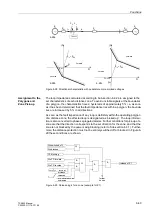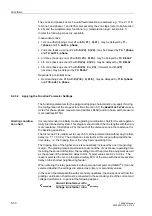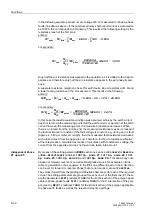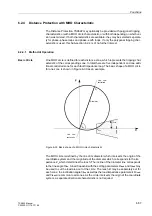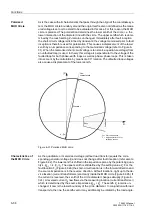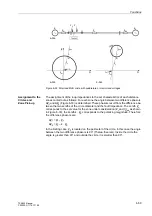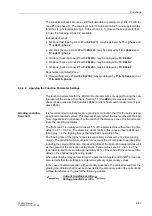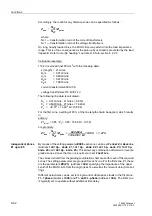
Functions
6-63
7SA522 Manual
C53000-G1176-C119-2
For the remaining zones the following correspondingly applies:
(address
);
(address
);
(address
);
(address
);
For the second zone it is also possible to set separate delay times for single- and multi-
phase faults. In general the delay times are set the same. If stability problems are ex-
pected during multiple-phase faults, a shorter time delay
(address
) may be considered under the given circumstances while a higher setting for
(address
) for single-phase faults may be tolerated.
The zone timers for the remaining zones are set with the parameters
(ad-
dress
),
(address
) and
(address
).
If the device is provided with the capability to trip single-pole, single-pole tripping is
then possible in the zones Z1 and Z2. While single-pole tripping usually applies to
single-phase faults in Z1(if the remaining conditions for single-pole tripping are satis-
fied), this may also be selected for the second zone with address
. Single pole tripping in zone 2 is only possible if this address is set to
<HV
The
presetting is
1R
.
Controlled Zone
Z1B
The overreaching zone Z1B is a controlled zone. The normal zones Z1 to Z5 are not
influenced by Z1B. There is therefore no zone switching, but rather the overreaching
zone is activated or deactivated by the corresponding criteria. Z1B can also be select-
ed in address
to be
=
)RUZDUG
or
5HYHUVH
. If this stage is not
required, it is set to
,QDFWLYH
in address
. The setting options are similar to
those of zone Z1: address
. The delay times for single-phase and mul-
tiple-phase faults can again be set separately:
(address
) and
(address
).
Zone Z1B is usually used in combination with automatic reclosure and/or teleprotec-
tion systems. It can be activated internally by the teleprotection functions (see also
section 6.4) or the integrated automatic reclosure (if available, see also section 6.1) or
externally by a binary input. It is generally set to at least 120% of the line length. On
three-terminal line applications (teed feeders), it must be set to securely reach beyond
the longest line section, even when there is additional infeed via the tee-off point. The
delay times are set in accordance with the type of application, usually to zero or a very
small delay. When used in conjunction with teleprotection comparison systems, the
dependence on the fault detection must be considered (refer to margin heading “Dis-
tance Protection Prerequisites” in Sub-section 6.4.2.
If the distance protection is used in conjunction with an automatic recloser, it may be
determined in address
which distance zones are released prior
Note:
For instantaneous tripping (undelayed) in the forward direction, the first zone Z1
should always be used, as only the Z1 and Z1B are guaranteed to trip with the shortest
operating time of the device. The further zones should be used sequentially for grad-
ing in the forward direction.
If instantaneous tripping (undelayed) is required in the reverse direction, the zone Z3
should be used for this purpose, as only this zone is guaranteed to trip with the short-
est device operating time for faults in the reverse direction. Zone Z3 is also recom-
mended as reverse looking zone in teleprotection Blocking schemes.
Содержание siprotec 7SA522
Страница 20: ...7SA522 Manual C53000 G1176 C119 2 ...
Страница 64: ...7SA522 Manual C53000 G1176 C119 2 ...
Страница 89: ...SIPROTEC 4 Devices 4 25 7SA522 Manual C53000 G1176 C119 2 Figure 4 20 CFC Logic example ...
Страница 408: ...7SA522 Manual C53000 G1176 C119 2 ...
Страница 456: ...7SA522 Manual C53000 G1176 C119 2 ...
Страница 516: ...7SA522 Manual C53000 G1176 C119 2 ...
Страница 620: ...Appendix B 48 ...

